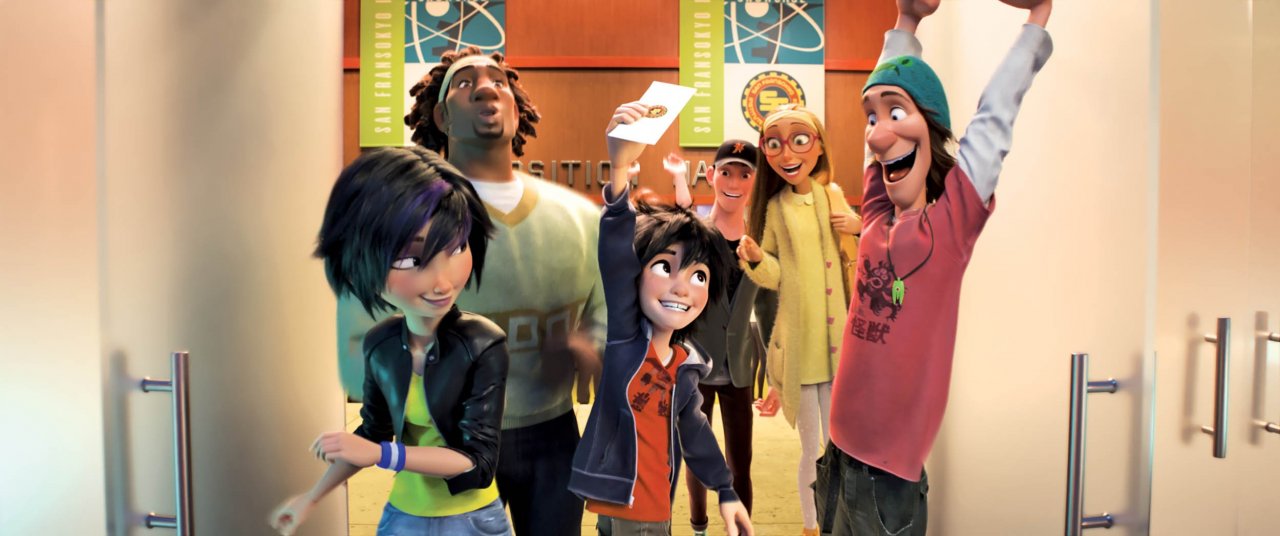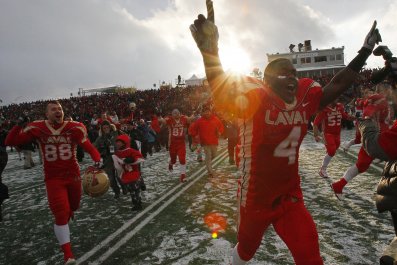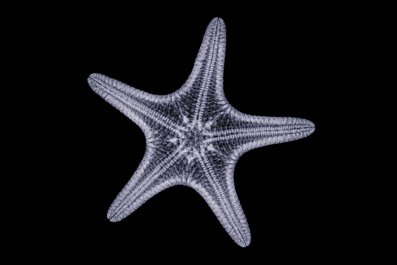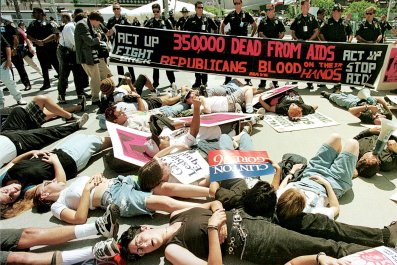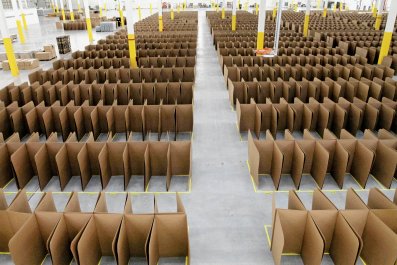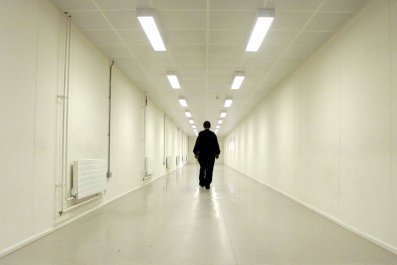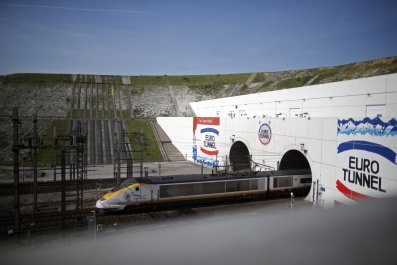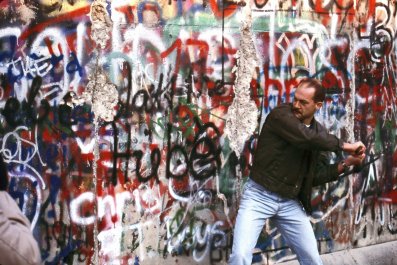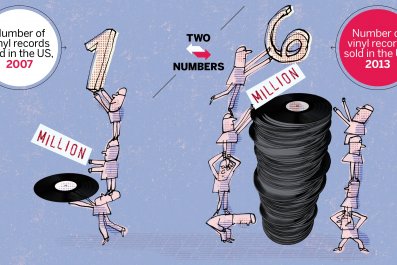Googling the words movie and Gogo will yield 7,530,000 results, which is roughly the number of times I've been asked how I got the name Gogo. The latest addition to the search engine comes courtesy of Disney, which produced Big Hero 6, a hugging-heavy new cartoon feature based on an eponymous Marvel comic book series. This is the first time since Disney purchased Marvel in 2009 for $4.24 billion that the studio's animators have mined its catalogue. Aside from the six big heroes, Disney's 3-D reworking doesn't borrow much from the series, which is as esoteric as Captain Ultra's real identity (Giffin Gogol).
One of the Big Heroes is a sardonic cycling junkie who answers to Go Go. (I once had a space between my front teeth; she has one between her Go's) This iteration sports a choppy, violet-streaked black bob and is happiest when roaring around SanFransokyo (the film's futuristic portmanteau-city setting) on a custom-built, magnetic-levitation bike. The gum-chewing daredevil squints like Clint Eastwood and blows bubbles big enough to pass for weather balloons. Unlike your typical Disney heroine, if you asked Go Go to wish upon a star, she would probably pop a wad of Bazooka in your face.
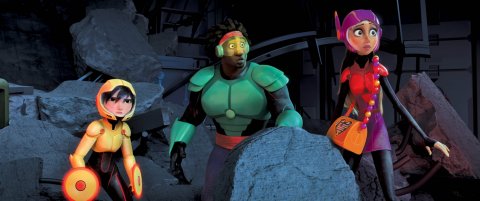
Last month I pulled on my vintage go-go boots and toured the headquarters of Disney's Feature Animation Studios in Burbank. I was met in the lobby by the film's directors, Don Hall and Chris Williams, who spent the past four years adapting the comic for the screen. Go Go, they told me, was tailored to suit the times. "In the comic books, she was the speedster of the group," said Hall. "But she had a sort of undefined power. You didn't know if it was a superpower or a super-suit—so we gave her detachable Maglev wheels—wheels that rely on magnetic levitation."
I can tell her from experience that it's not always easy being a Gogo. To the TSA agents who monitor IDs before I reach airport scanners, I've always been Margaret, like my mother before me, and her mother before her, and all the rest in a long line of "mothers before." But early on my parents realized the problem with this loyal Irish Roman Catholic tradition: It was insanely confusing. I needed a handle that separated me from the rest of the Maggies and Marges and Margeauxs (cq) (no Peggys!), something Irish and something different. My father, a descendant of Polish Jews and a lover of Irish writers, came up an unconventional solution—I would be called by my middle name, Gogo. He had nicked it from his favorite play, Samuel Beckett's Waiting for Godot.
As a little girl, I quickly realized "Gogo" had drawbacks. Playmates just didn't get it. Their parents would quip: "Were you conceived in a go-go bar?" In grade school, classmates teased me with the references to early 1990s kids' TV: Power Rangers (theme song, "Go, go Power Rangers!"), Inspector Gadget (detective's technology-summoning catchphrase, "Go, go gadget!") and Tiny Toons (recurring character Gogo Dodo, a wacky male bird with a pink umbrella on his head and the morphing abilities of a stick of Wrigley's Spearmint). My first boyfriend serenaded me with songs by The Go-Gos and Wham!'s Wake Me Up Before You Go-Go. (The romance lasted about as long as the single.)
Oh, well. At least no one ever never forgot my name.
The most outspoken Gogo of all was the chanteuse portrayed by Eartha Kitt in St. Louis Blues, a 1958 biopic of blues great W.C. Handy (Nat King Cole). Handy is estranged from his father, a Memphis minister who insists he'd rather see his son dead than "making music for the devil." Years pass, and as the New York Symphony prepares to perform W.C.'s St. Louis Blues at a Manhattan concert hall, Gogo shows up at the preacher's house and accuses him of trying to destroy his son. She growls: "You're about to hear some facts, Reverend."
The Go Go of Big Hero 6 is big on facts. Science facts. The film differs from the usual Disney fare by emphasizing technology over fantasy. It's a relationship-free, droid-charged action superhero epic that makes nerds seem (almost) cool. The plot involves micro-bots—tiny robotic links that team up like soldier ants to create anything imaginable, and some stuff that isn't.
The micro-bots serve as a meta-reference to Disney's new computer animation process. The most technologically advanced Disney animation to date, Big Hero 6 was made with Hyperion, a "global-illumination simulator" the studio invented to manipulate the densely detailed photo-realism. The city of SanFransokyo is composed of 83,000 buildings, 100,000 vehicles, 215,000 streetlights and 260,000 trees, not to mention the innumerable citizens generated by a new animation tool called Denizen.
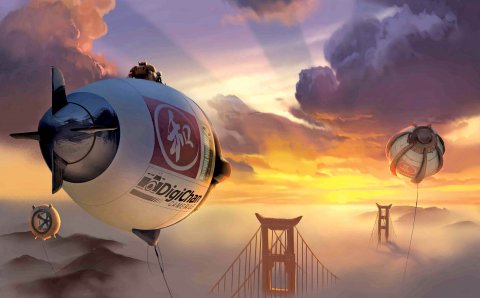
To pull this off, Hyperion required the collaboration of 55,000-core supercomputers in four cities and software (Coda) that Disney's research-and-development team designed to manage the 400,000 or so computations processed every day. Hyperion is the closest moviemakers have come to Deep Thought, the supercomputer in Douglas Adams's sci-fi classic The Hitchhiker's Guide to the Galaxy. As every HHGTTG fan knows, Deep Thought calculated the Answer to the Ultimate Question of Life, the Universe and Everything, and came up with…42.
And what was the trickiest calculation of Big Hero 6? "Creating and using this technology simultaneously," said technical supervisor Hank Driskill. "It was very much a work-in-progress. We did a little science experiment, the experiment looked really promising and then we just decided to go for it and make a movie with it—which was kinda crazy!"
The plot of Big Hero 6 is propelled by all sorts of rockety-sockety pyrotechnics. Hiro Hamada (voiced by Ryan Potter) is a boy genius who attends the SanFransokyo Institute of Technology. He's joined by Go Go (Jamie Chung); Wasabi (Damon Wayans Jr.), a burly African American obsessed with lasers; Honey Lemon (Genesis Rodriguez), a flirty, bespectacled blonde with a talent for rainbow-hued chemistry; Fred (T.J. Miller), the group's stoner-ish tag-a-long and resident Godzilla freak: and the giant robotic marshmallow, Baymax (Scott Adsit), whose toddle was modeled on a baby with a full diaper. All wind up battling a villain whose identity is concealed behind a Kabuki mask.
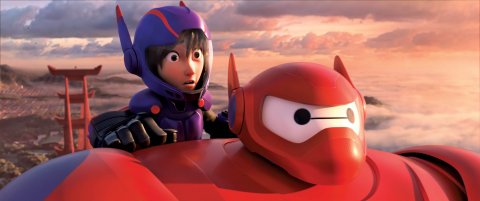
In the film's most endearing sequence, Hiro updates Baymax's database to include a full library of martial arts moves and programs a 3-D printer to create custom body armor to camouflage its benign appearance. The Big Hero 6, says producer Roy Conli, are intended as embodiments of "the maker movement."
The whirling, swirling Go Go is a maker of things that go fast. "X-Games type stuff," says Hall. Her persona was inspired by bike messengers Hall and Williams had observed in San Francisco. They wanted her to be brave, fearless and, most all, cool—in the mold of legendary downhill mountain biker Missy "The Missile" Giove, famed for her punky hair and ovaries-to-the-wall exuberance.
The Go Go 2.0 they conjured was a hit: The female employees polled at Disney strongly identified with her character. "She's super-confident and super-capable," Hall said. "Really the only hero who can handle herself."
"The rest have to catch up to her level," added Williams. "She's the Wolverine of the group—super-tough, tough as nails. Yet she's kind of shy and doesn't say much. She's a woman of few words."
You've got to be kidding! A shy Gogo who doesn't have much to say?
You're about to hear some facts, Reverend.



